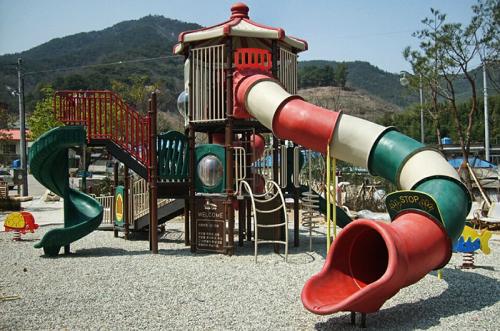Planning and Design Considerations for Outdoor Musical Environments

Research studies show a strong correlation between improved physical, mental, and emotional health and music integrated outdoor spaces. These studies highlight the need for outdoor musical environments to help foster a sense of community and connectedness between individuals. This type of collective good and connectedness has numerous positive societal impacts, including more spaces for public gatherings and space for animal and nature conservation efforts.
Many municipalities, national parks, and recreation departments have taken the lead in designing and implementing outdoor music spaces into their public infrastructure. These music parks are often integrated into playgrounds, trails, dog parks, recreational spaces, and community gardens. These spaces are essential areas for active community engagement and the health of everyone who uses them. Individuals and families can utilize these diverse outdoor music spaces for gatherings, exercise, a peaceful retreat, or event space. creative recreation
Beyond traditional parks and recreation areas, outdoor musical spaces can be found in a variety of other locations, some entirely unexpected. Music is often integrated into non-traditional outdoor spaces such as playgrounds, schoolyards, arts and culture centers, hospitals, senior centers, active living communities, and even military bases.
Based on the studies on music and nature, improving a sense of community and emotional wellbeing, many amusement parks, hotels, civic centers, and museums utilize music to create a sense of ambiance in their centers. Incorporating music into these types of environments helps to create a distinct experience. Disneyland is a perfect example of music evoking strong emotions in an outdoor environment.
Education and aging experts both agree that music and nature have a strong positive influence on the physical, emotional, and mental health of children and older adults. In planning and designing these types of spaces, it is essential to remember the positive psychological effects of music on varying age ranges. Young children, for example, would benefit from musical areas that incorporate physical play into the experience. Older adults, however, would greatly benefit from musical experiences that invoke a sense of nostalgia. This is especially true for older adults who may be battling severe mental health diseases, such as dimension. There is no limit to what emotions music can stir up. snuffers
Other notable design considerations for integrating music into outdoor spaces include sound systems, if applicable, and crowd control. In many outdoor areas, music is played through an advanced speaker and audio system. While this is a significant investment, it does allow for music to be changed to suit a season or event and can be used during inclement weather. Live music, by contrast, usually comes with little to minimal costs but is often dependent on external factors such as weather, availability of musicians, and municipality bylaws. Crowd control is also a critical factor in designing music, integrated outdoor spaces. Music played throughout the area allows for free movement of individuals. Centralized music hubs within an outdoor space can help manipulate the movement and gathering of people but can often pose challenges for crowd control.
With a little creativity and strategic planning, music can create a dynamic, multi-sensory experience in virtually any setting.
Comments